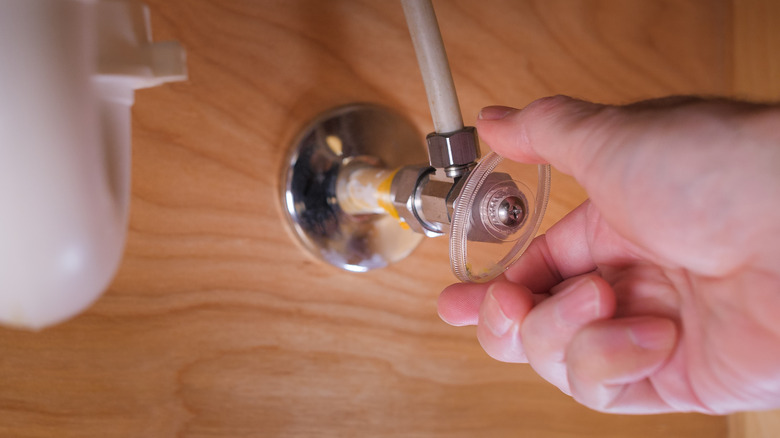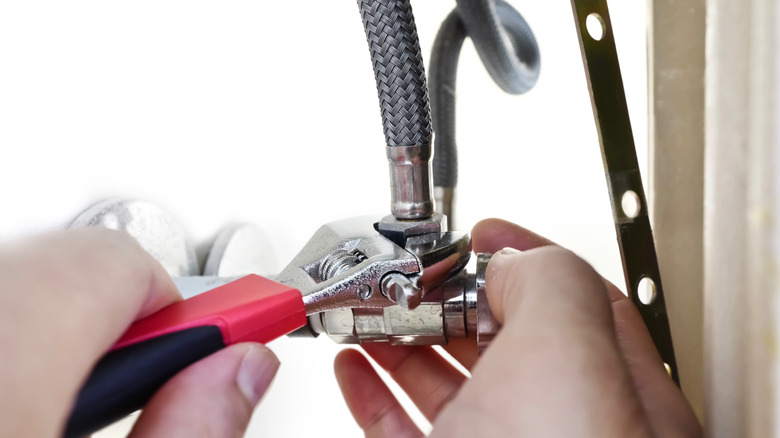You Might Want To Replace Your Water Shut-Off Valve And Here's Why
A phone call that begins with "quick, where's the water shut-off?" is about as welcome as one that starts with "umm, do you know where the fire extinguisher is?" Fortunately, supply line shut-off valves (commonly referred to as "stops") are usually easy to find. They're your first line of defense against fixture leaks, and turning them off is your first step when you accidentally drop an object in your toilet. All plumbing fixtures in a home except tubs and showers are required by ICC building code to have shut-off valves, and they're usually underneath and behind fixtures like toilets and sinks. If you've ever replaced a faucet or repaired a toilet, you're familiar with them. What you might not have picked up on is that yours might need replacing because of its age or quality. And when a stop needs to be replaced, you want to do that before the stop is needed.
You might occasionally have a hard time finding a shut-off valve. Its installation might have been so inconvenient, so it was simply left off, especially for oddball outlets like pot-fillers. Houses that use manifold distribution systems to centrally and individually control hot and cold water to each fixture might sometimes omit individual shut-offs at the fixture, assuming the manifold itself is accessible enough to meet code. Regardless of the reason you can't track down a stop, it's a good idea to locate your house's main water shut-off valve. (It's usually buried in a box wherever the main water line enters the house.)
How to know if you should replace a shut-off valve
One reason you might need to replace the main shut-off valve is that sometimes sink and toilet supply lines can spring leaks of their own, in which case shut-offs are ineffective. This is sometimes because they have integrated multi-turn compression valves — the ones you have to turn a few times to turn the water on and off — which frequently leak at the stem. And sometimes their internal rubber parts break down and interfere with the function of the faucets they serve. They often fail as early as 8 to 10 years after their installation, so it's a good idea to replace them at least that often. Indeed, any time you have the opportunity, you should inspect the valves and decide if it's a good time to replace them. Multi-turn valves should always be replaced with high-quality ¼-turn valves when possible. Valves with plastic components are especially prone to failure, and should be replaced with better stops as well.
Metal ¼-turn valves are more durable than their plastic and multi-turn counterparts. They're also simpler, with fewer points of wear and fewer points of failure. They're quicker and easier to operate, which might be important for anyone who has difficulty turning the valve handles or working on their knees. And it's easier to see the on/off state of a ¼-turn valve: The handle of a ¼-turn valve will be parallel to the flow of water when open (on), and perpendicular to the pipe when closed (off).

